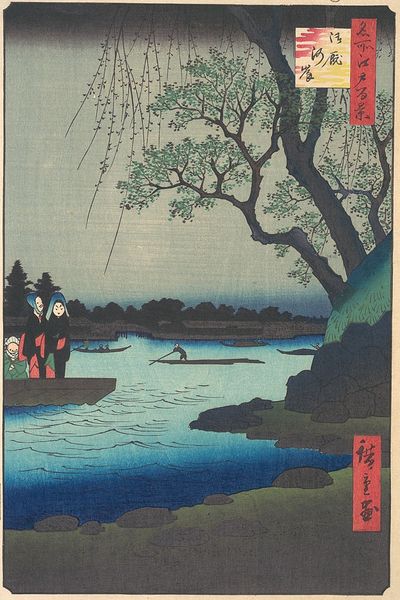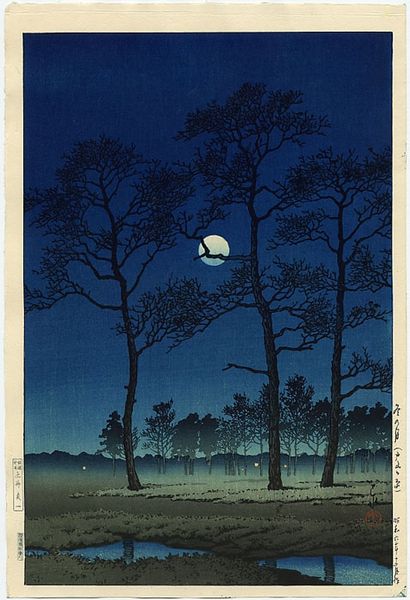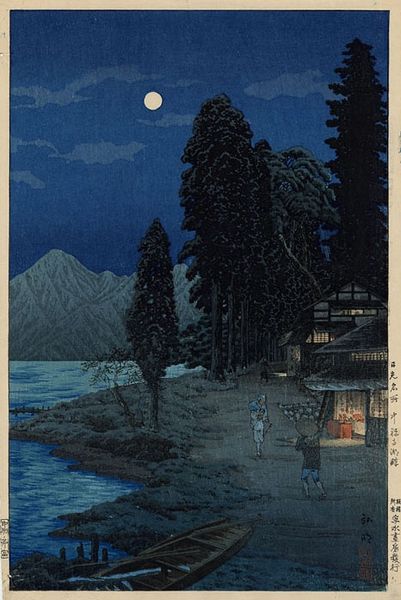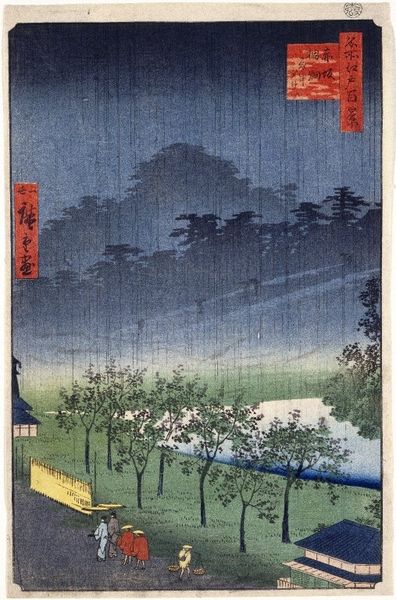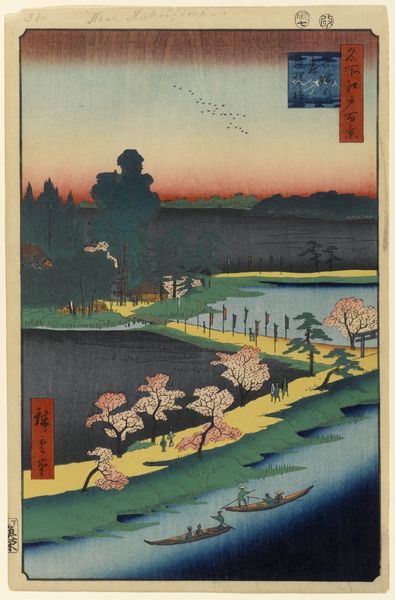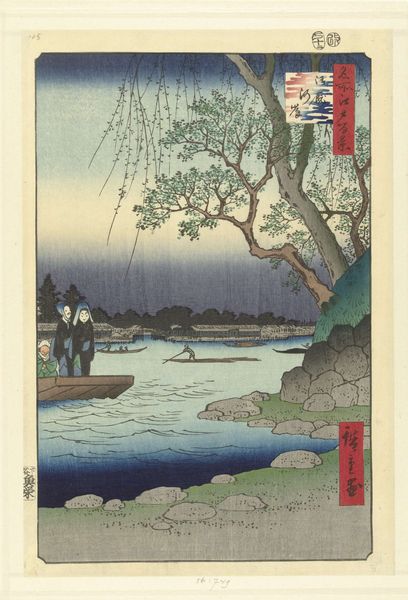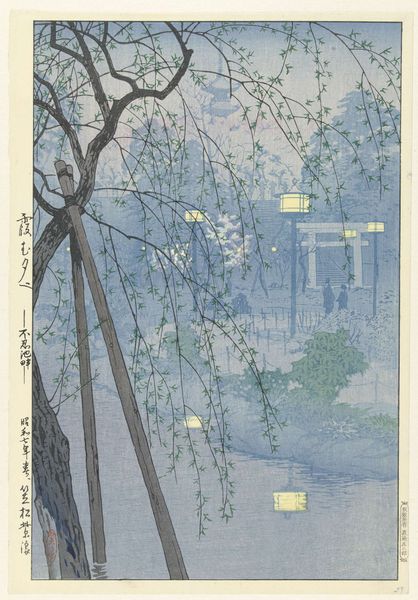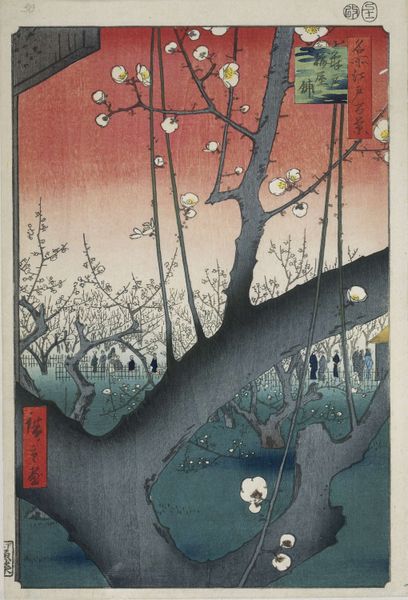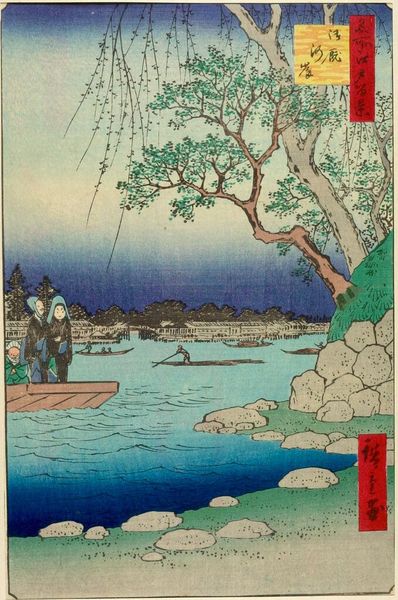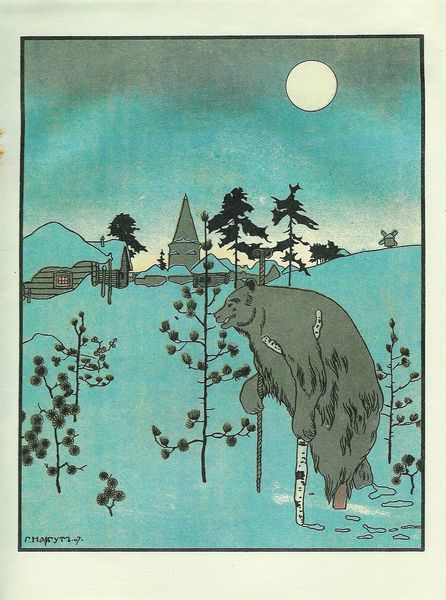
Copyright: Public domain Japan
Editor: This is Hasui Kawase's "Spring Evening at Inokashira Park," a watercolor woodblock print from 1931. It has a strikingly serene mood, emphasized by the dominance of cool blue tones, but it's also subtly disrupted by the contrast of the trees reflecting on the water. What compositional elements stand out to you? Curator: I am particularly interested in how the composition directs the eye through the artwork. Notice how the artist uses the placement of the moon as a focal point, creating a visual anchor in the upper part of the piece. The rhythmic repetition of the trees and their reflections create a structured field, almost like a mirror image, prompting a conceptual relationship between reality and image. How does the scale of the artwork inform your understanding? Editor: It being a print, and thus likely fairly small, makes me consider intimacy and the everyday, rather than grandeur. Do you think the texture created through the woodblock print medium affects the artwork’s expression? Curator: Yes, undoubtedly. The grain of the woodblock enhances the texture and depth of the artwork, particularly evident in the rendering of the water's surface. Each line contributes to a complex surface of visual sensation. It contrasts beautifully with the smoother rendering of the moon. Editor: I hadn't considered that contrast of textures, that really changes how I see the piece. Curator: These deliberate tensions—between the micro and macro of texture and tone—demonstrate how the artist actively shapes our engagement with the represented scene. Thinking critically about the form allows a deeper consideration of content. Editor: It's amazing how formal analysis reveals such richness. Curator: Indeed. Understanding art requires appreciating the artist’s intent in using every tool, line, and shade.
Comments
No comments
Be the first to comment and join the conversation on the ultimate creative platform.
